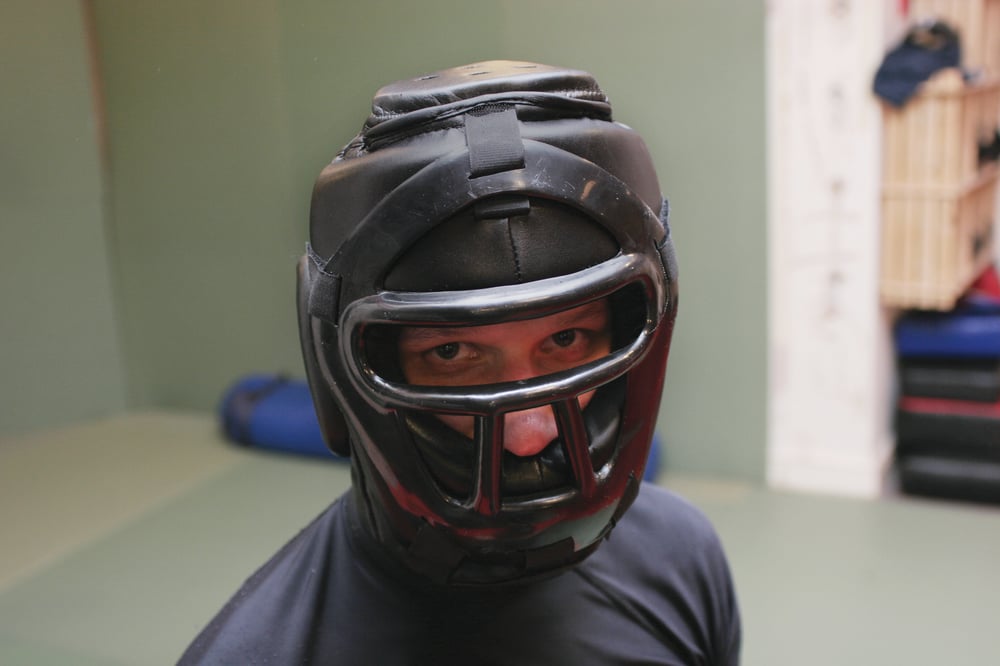
Issue 036
April 2008
Each issue we take a look at a different piece of MMA training. This month we take a look at head guards.
When would you wear them?
Head guards aren’t worn during fights, but they are useful for training. Most often used while sparring stand-up striking, they can also be useful for ground or clinch striking drills as well as full MMA sparring.
Why wear them?
Head guards are used to protect the head and face from strikes. They help to prevent cuts, bruising and swelling of the face and ears. They also somewhat reduce the force of a blow to the head, although the degree to which they protect against concussion is controversial. They are a useful precaution, particularly in pre-fight training when avoiding cuts is crucial, but it should not lead you into a false sense of security.

Key Features
Fastening device
There are basically two kinds of fastening for head guards. There are those which fasten at the front with a chin strap, and those that fasten at the back. The back-fastening version is generally more secure, especially for sparring that involves clinch work or grappling. Those with a chin strap can usually be adjusted at the back as well to get a good fit.
Face protection
Some head guards have full face protection that covers the cheekbones, others are ‘open face’. There is a trade-off here between protection and visibility – the more padding there is, the more of your peripheral vision you lose.
It’s also possible to get headgear that has a plastic grille covering the face area. This can be useful for heavy sparring and striking drills, but is probably not something you’ll use on a day-to-day basis.
Jaw protection
Some head guards have more protection around the jaw area than others. This is a vulnerable area for strikes, both for causing concussions and for damage to the jaw itself, so it’s certainly something to bear in mind.
Padding
Head guards come in different materials, and different thicknesses of padding. Words such as “super shock absorbent closed cell durable foam gel air cushion technology” get bandied about, but really there’s no substitute for getting the thing in your hands (or better still, on your head) and seeing what it feels like.
Materials and stitching
Most often made from leather, sometimes other materials are used such as poly urethene foam. The important factor here is durability, so always check for any flaws or defects in the stitching.
General Tips
Get a size that fits well
It’s important to have a head guard which will stay on your head, and won’t slip and block your vision while you’re sparring. Make sure that the one you choose can be adjusted to fit properly and that is a good shape for your head.
Maintenance
As with all training gear, make sure that your head guard is wiped down and allowed to air between training sessions. Nobody likes a mouldy head guard. Check cleaning instructions with the manufacturer.
Expect it to feel uncomfortable at first
Few people like wearing a head guard the first time they put one on. They can feel uncomfortable, claustrophobic and most annoying of all, restrict your vision. While having a good quality head guard which fits well will reduce the problems, you should still expect it to take some time to get used to.
Try out different brands
There really is no substitute for trying out a few different head guards before you decide on which one to get. Ideally, borrow some from your training partners and spar a round or two in them. See what the visibility is like, get a bit of a thump on the head to see how the padding feels and find out how much it slips and moves around. Bear in mind that when you are sweaty and some Neanderthal is pulling on your head, what feels now like a nearly-but-not-quite-perfect fit can become a real annoyance.










